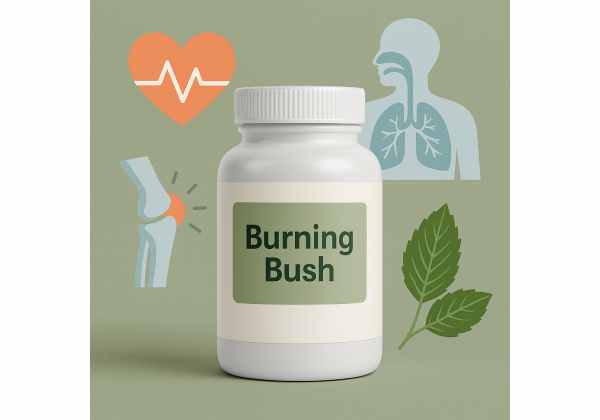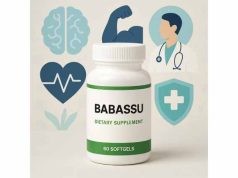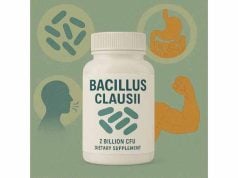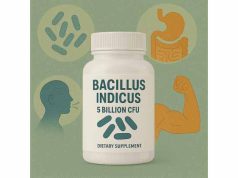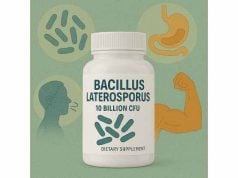Burning bush (Euonymus alatus) is a striking plant known not only for its fiery-red autumn foliage but also for its rich tradition in herbal medicine. Used for centuries in Eastern and Western herbal systems, burning bush has gained attention as a supplement for its unique blend of bioactive compounds, anti-inflammatory effects, and traditional wellness applications. Today, modern users are exploring burning bush extracts for digestive support, circulatory health, and immune function. But what does science actually say about its properties, effectiveness, and safety? This comprehensive guide examines the key benefits, uses, dosage guidelines, and potential side effects of burning bush supplements to help you make an informed decision.
Key Takeaways
- Multi-Purpose Herbal Remedy: Burning bush has a long history in traditional medicine for supporting digestion, blood circulation, and immune health.
- Rich in Bioactive Compounds: Contains beneficial alkaloids, flavonoids, and terpenoids that may offer anti-inflammatory and antioxidant effects.
- Safety First: Generally well-tolerated in traditional doses, but higher amounts or improper use can lead to adverse effects.
- Unique Origins: Derived from both root and aerial parts of the Euonymus alatus shrub, especially prized in Asian herbal medicine.
- Always Consult Professionals: Due to possible interactions and rare side effects, seek advice from a healthcare provider before use.
Table of Contents
- Burning Bush Plant Overview and Traditional Medicinal Uses
- Bioactive Compounds and the Science Behind Burning Bush Supplements
- Clinically Relevant Benefits and Modern Uses of Burning Bush
- Burning Bush Safety Profile, Side Effects, and Potential Interactions
- Effective Dosage, Best Usage Practices, and Administration Tips
- Burning Bush Frequently Asked Questions (FAQ)
Burning Bush Plant Overview and Traditional Medicinal Uses
Burning bush (Euonymus alatus), sometimes called winged spindle tree, is a deciduous shrub native to Asia but widely cultivated in gardens and landscapes for its stunning scarlet-red fall color. Beyond its ornamental beauty, the plant has a rich legacy in traditional medicine, particularly in China, Korea, and Japan. In these regions, both the roots and the above-ground parts have been valued for their healing properties for hundreds of years.
Botanical Description and Origins
- Scientific name: Euonymus alatus
- Common names: Burning bush, winged euonymus, spindle tree
- Family: Celastraceae
- Parts used: Roots, bark, stems, leaves, and sometimes fruit
Burning bush’s unique “winged” branches and vibrant leaves have long made it an eye-catching addition to gardens. Yet, it’s what lies within the plant’s tissues that has drawn the attention of herbalists and healers throughout history.
Traditional Herbal Uses
For centuries, burning bush has been part of classic herbal formulas, especially in East Asian medicine:
- Promoting Blood Flow: Burning bush root and bark were traditionally decocted to “activate blood,” supporting healthy circulation and relieving stagnation or discomfort.
- Digestive Support: Folk medicine often employed burning bush teas or powders for easing indigestion, stomach pain, or mild gastrointestinal disturbances.
- Women’s Health: The root is included in some remedies to support menstrual regularity and relieve mild discomfort.
- Anti-Inflammatory Tonic: Used topically and internally, burning bush preparations have been applied to address swelling, bruising, and joint pain.
In traditional Chinese medicine (TCM), burning bush is classified as “warming,” with properties believed to move blood, dispel wind-dampness, and clear certain toxins. It’s often found in formulas with other herbs to address specific imbalances.
Global Expansion and Modern Uses
As herbal traditions cross borders, burning bush is now found in dietary supplements, teas, tinctures, and even topical creams in many countries. The plant’s diverse range of uses includes:
- Digestive herbal blends
- Menstrual support formulations
- Circulatory system supplements
- Anti-inflammatory topical preparations
Folk Medicine vs. Modern Evidence
While traditional use is extensive, the transition from folk remedy to standardized supplement involves both preservation of heritage and modern scientific validation. Recent interest in burning bush centers on its chemical composition, potential clinical benefits, and how best to use it safely in the context of contemporary health and wellness.
Bioactive Compounds and the Science Behind Burning Bush Supplements
The medicinal properties of burning bush are rooted in its impressive phytochemical diversity. Scientists have uncovered a variety of unique natural compounds in Euonymus alatus, many of which are associated with its observed effects on health and wellness.
Key Bioactive Ingredients
- Alkaloids: Naturally occurring compounds known for their physiological effects, some of which may promote circulation or modulate pain pathways.
- Flavonoids: Potent antioxidants that combat oxidative stress, support cardiovascular function, and may contribute to anti-inflammatory benefits.
- Terpenoids: A large class of phytochemicals found in burning bush, linked to anti-inflammatory, anti-tumor, and immune-modulating actions.
- Lignans and Triterpenes: Lesser-known but important plant chemicals with emerging evidence for cellular protection and metabolic health.
How Do These Compounds Work?
1. Anti-Inflammatory Actions
Burning bush extracts have demonstrated the ability to down-regulate inflammatory markers in laboratory studies. The terpenoids and flavonoids, in particular, are believed to:
- Reduce inflammatory enzyme activity
- Lower levels of pro-inflammatory cytokines
- Promote tissue recovery and comfort after injury or strain
2. Antioxidant Defense
Flavonoids and phenolic acids present in burning bush offer strong free radical-scavenging abilities. This means they help neutralize unstable molecules (free radicals) that can damage cells, DNA, and tissues over time, potentially slowing the aging process and supporting long-term health.
3. Effects on Circulation and Blood Flow
Traditional claims that burning bush “moves blood” are supported in part by modern findings. Certain alkaloids and terpenoids may promote vasodilation (relaxation of blood vessels) and healthy blood flow. This effect is especially valued in herbal blends for circulatory health and managing mild menstrual discomfort.
4. Antimicrobial and Immune Modulation
Laboratory research indicates that burning bush extracts can inhibit the growth of some bacteria and fungi. While this is not a substitute for conventional antibiotics, it hints at why burning bush was used for wound care and internal cleansing in traditional systems.
5. Other Noteworthy Actions
- Metabolic support: Some studies suggest triterpenes and lignans in burning bush may influence blood sugar metabolism or lipid profiles.
- Neuroprotective properties: Emerging animal research points to possible benefits for cognitive health and nervous system support, although clinical evidence in humans is limited.
Absorption, Bioavailability, and Processing
Burning bush supplements are typically formulated as:
- Dried root or bark powders (for capsules or teas)
- Alcoholic or aqueous extracts (for tinctures and liquid drops)
- Topical ointments (for joint or skin use)
Absorption can vary depending on preparation. Alcoholic extracts may deliver more bioactive compounds, while teas and decoctions provide gentler, cumulative effects.
Research Status and Evidence Level
While traditional use is robust and early research is promising, rigorous human clinical trials on burning bush supplements are limited. Most modern evidence comes from:
- In vitro (test tube) studies
- Animal models
- Historical clinical reports from traditional medicine
- Preliminary human studies (small sample sizes)
Thus, burning bush should be viewed as a promising supplement with a foundation in tradition, a growing body of scientific support, and the need for more high-quality research to confirm specific health claims.
Clinically Relevant Benefits and Modern Uses of Burning Bush
The intersection of traditional wisdom and contemporary science reveals a fascinating picture of burning bush as a versatile botanical. While not all historical claims have been validated by modern research, an increasing number of clinical and laboratory studies suggest a range of real-world benefits.
1. Digestive Support and Gastrointestinal Health
Burning bush is frequently included in herbal blends aimed at soothing digestive discomfort and improving gastrointestinal function.
- Relief from Indigestion: Extracts and teas may help ease bloating, mild cramping, or feelings of “stuckness” after meals.
- Gut Motility: Some compounds in burning bush may support gentle movement of the digestive tract, potentially relieving mild constipation.
- Stomach Protection: Flavonoids and terpenoids are thought to help protect the stomach lining from irritation, a traditional use supported by early lab research.
2. Circulatory and Cardiovascular Wellness
Modern herbalists often use burning bush to support healthy blood flow and cardiovascular function.
- Promotes Circulation: By relaxing blood vessels, burning bush may improve peripheral circulation and reduce symptoms like cold extremities.
- Heart Health: Antioxidant compounds may protect against oxidative damage that contributes to cardiovascular disease.
- Menstrual Relief: Traditional formulas use burning bush to alleviate discomfort and promote regularity in the menstrual cycle, likely through its effect on blood flow and inflammation.
3. Anti-Inflammatory and Pain-Relieving Effects
- Reduces Joint and Muscle Discomfort: Topical preparations and internal use are both reported to ease mild aches and inflammatory conditions such as mild arthritis.
- Recovery After Injury: Folk medicine uses burning bush for post-injury recovery, swelling, and bruising—actions potentially explained by its terpenoid content.
4. Immune Support and Antimicrobial Properties
- Supports Immune Balance: By modulating inflammatory pathways, burning bush may help maintain immune equilibrium, though it should not replace standard immune therapies.
- Antimicrobial Action: The plant’s extracts have shown inhibitory effects on various bacteria and fungi in laboratory settings.
5. Skin and Topical Applications
- Eases Swelling and Bruises: Topical ointments or poultices with burning bush are traditionally applied to minor injuries, swelling, or painful areas for local relief.
- Minor Wound Care: Its antimicrobial effects may help keep wounds clean, though it should not replace medical-grade antiseptics for serious injuries.
6. Emerging Research: Blood Sugar and Cognitive Health
- Blood Sugar Balance: Early studies in animals hint that burning bush extracts could influence insulin sensitivity or help maintain healthy blood sugar levels, but robust human data are lacking.
- Brain and Nerve Health: Some animal research indicates potential neuroprotective actions, supporting future studies in cognitive support and nervous system wellness.
7. Who May Benefit Most?
- Adults seeking natural support for digestion, circulation, or mild inflammatory discomfort
- Women interested in herbal approaches to menstrual regularity or relief
- Those looking to complement conventional immune or cardiovascular wellness strategies with plant-based supplements
8. Practical Considerations
Burning bush is rarely used as a stand-alone herb; it’s most often blended with other botanicals for a broader, synergistic effect. Always select supplements from reputable manufacturers to ensure potency and purity.
While burning bush shows great promise, it’s not a replacement for professional medical care. Use it as a supportive tool in a comprehensive wellness plan.
Burning Bush Safety Profile, Side Effects, and Potential Interactions
When considering any herbal supplement, safety is paramount. Burning bush (Euonymus alatus) has a long history of use in traditional medicine, which often suggests a favorable safety profile. However, as with many botanicals, the way it’s prepared, the dosage used, and the individual’s health status can significantly influence its tolerability. Let’s explore what’s known about the safety, adverse effects, and drug interactions associated with burning bush.
1. General Tolerability and Traditional Dosing
Historically, burning bush has been used in measured amounts within multi-herb formulas. Traditional preparations, especially decoctions and teas, tend to use moderate quantities, and reports of severe toxicity are rare when such guidelines are followed.
- Mild and moderate doses: Generally well-tolerated in healthy adults.
- Traditional multi-herb formulas: May further buffer against adverse effects by combining burning bush with other balancing botanicals.
2. Potential Side Effects
Although most people experience no side effects at traditional doses, higher or prolonged use may cause:
- Digestive upset: Nausea, mild diarrhea, or stomach discomfort, especially if taken in excess.
- Skin sensitivity: Rarely, topical use could cause mild redness or irritation, particularly in those with sensitive skin or plant allergies.
- Headache or dizziness: Reported anecdotally at unusually high doses.
The seeds and fruit of Euonymus species are known to be toxic in large amounts. While supplement-grade products use roots and bark (not seeds or fruit), consumers should ensure their supplement source is reputable and does not contain potentially toxic parts.
3. Contraindications: Who Should Avoid Burning Bush?
- Pregnant or breastfeeding women: Safety is not well established; avoid use unless under medical supervision.
- Young children: Not recommended due to insufficient safety data and risk of accidental ingestion.
- Those with known allergies to Celastraceae plants: Increased risk of hypersensitivity reactions.
4. Medication and Supplement Interactions
While burning bush does not have an extensive interaction profile, several considerations are warranted:
- Anticoagulant and antiplatelet drugs: Because burning bush may affect blood flow, there’s a theoretical risk of increased bleeding tendency if combined with blood-thinning medications. Monitor for signs of easy bruising or unusual bleeding.
- Blood sugar medications: Emerging evidence suggests burning bush could influence blood sugar; use with caution in those on anti-diabetic drugs, as additive effects may occur.
- Other herbal supplements: When taken with other botanicals with similar actions (like circulation enhancers or anti-inflammatories), effects could be amplified.
5. Signs of Overdose or Adverse Reaction
If you experience any of the following after taking burning bush, discontinue use and seek medical attention:
- Severe nausea, vomiting, or persistent diarrhea
- Skin rash, hives, or swelling
- Dizziness, confusion, or difficulty breathing
- Symptoms of low blood sugar (shakiness, sweating, confusion) if you are on anti-diabetic medications
6. Responsible Use and Quality Control
- Check for third-party testing: Choose supplements from brands that test for purity, potency, and contaminants such as heavy metals or adulterants.
- Review product labels: Ensure that only root or bark extracts (not seeds or fruits) are included.
- Consult your healthcare provider: Especially if you are on medication, have chronic conditions, or are planning to use burning bush regularly.
7. Environmental and Ethical Concerns
Burning bush is considered invasive in some regions outside its native range. Always source supplements from responsible harvesters who do not contribute to the spread of this plant in vulnerable ecosystems.
Key Safety Reminders
- Burning bush is generally safe in traditional preparations and moderate doses for most healthy adults.
- Adverse effects are rare but may occur, especially at high doses or in sensitive individuals.
- Always seek guidance from a healthcare professional if you are pregnant, breastfeeding, taking medication, or have chronic health conditions.
Effective Dosage, Best Usage Practices, and Administration Tips
Unlocking the benefits of burning bush as a supplement depends not only on the quality of the extract but also on how you use it. Let’s break down best practices for dosage, timing, and integration into daily wellness routines.
1. Dosage Guidelines Based on Tradition and Modern Practice
Because standardized dosing data is limited, most recommendations rely on traditional formulas, manufacturer guidelines, and expert consensus.
- Typical adult oral dosage: 300–800 mg of standardized burning bush root or bark extract daily, divided into two or three doses.
- Decoction or tea: 3–6 grams of dried root or bark simmered in water for 20–30 minutes, consumed 1–2 times per day.
- Topical use: Apply ointment or cream containing 1–5% burning bush extract to affected area up to 2–3 times daily.
Always start with the lowest suggested dose to assess tolerance, especially if you are new to herbal supplements.
2. Methods of Administration
- Capsules or tablets: Most convenient for standardized dosing; ensure the label specifies Euonymus alatus root or bark extract.
- Tinctures and liquid extracts: Allow for flexible dosing; check alcohol content if you are sensitive.
- Herbal teas or decoctions: Offer a gentle, traditional approach, often blended with complementary herbs for digestive or circulatory support.
- Topical preparations: Best for addressing localized discomfort, swelling, or skin health concerns.
3. When and How to Take Burning Bush
- With meals: May reduce risk of stomach upset and improve absorption of certain compounds.
- Timing: Split doses morning and evening for steady effects.
- Duration: Short courses of 2–6 weeks are typical; longer use should be supervised by a qualified practitioner.
4. Combining with Other Supplements
- Synergy with other botanicals: Burning bush is commonly paired with herbs like ginger, cinnamon, or angelica root for digestive and circulatory blends.
- Avoid redundancy: Do not combine with supplements with similar effects (e.g., strong blood thinners or other potent anti-inflammatories) unless supervised by an expert.
5. Tips for Maximizing Results
- Monitor your body: Track changes in energy, digestion, menstrual patterns, or discomfort levels.
- Stay consistent: Herbal effects are often cumulative and may take several days or weeks to notice.
- Hydration: Drink plenty of water, especially if using burning bush teas or decoctions.
6. Special Populations
- Elderly individuals: Begin at the lower end of the dosing range; effects may be more pronounced.
- Children: Avoid unless specifically recommended and supervised by a pediatric herbalist.
- Pregnant/breastfeeding: Not recommended due to insufficient safety data.
7. How to Choose a Quality Burning Bush Supplement
- Check botanical source: Look for “Euonymus alatus root” or “bark extract.”
- Confirm purity: Avoid blends with unidentified “proprietary formulas.”
- Research the manufacturer: Opt for brands with strong reputations for quality, transparency, and third-party testing.
8. What to Expect
- Mild, gradual effects: Most users notice subtle improvements in digestion, circulation, or comfort after consistent use.
- Complementary lifestyle: Combine with healthy habits—balanced diet, stress management, gentle movement—for best results.
Burning Bush Frequently Asked Questions (FAQ)
What is burning bush used for in herbal medicine?
Burning bush is used to support healthy circulation, digestion, and menstrual comfort. It’s also valued for mild anti-inflammatory and immune-balancing effects in traditional East Asian herbal systems.
Is burning bush safe to take daily?
When used at standard doses and under guidance, burning bush is generally safe for short-term daily use in adults. Long-term use or high doses should be supervised by a healthcare professional.
Are there any side effects of burning bush supplements?
Most people tolerate burning bush well, but some may experience mild digestive upset or skin irritation. High doses can cause more pronounced symptoms. Always use as directed and monitor your response.
Can burning bush interact with medications?
Yes, burning bush may theoretically increase bleeding risk with blood thinners and affect blood sugar levels if combined with diabetes medications. Consult your doctor if you take these or other prescription drugs.
Who should avoid using burning bush?
Pregnant or breastfeeding women, young children, and those with allergies to Euonymus species should avoid burning bush unless advised otherwise by a qualified practitioner.
How do you take burning bush for best results?
Take standardized capsules, teas, or tinctures according to label directions, ideally with meals. Use consistently for several weeks to notice cumulative effects.
Is burning bush the same as the ornamental garden shrub?
While the supplement comes from Euonymus alatus, some garden burning bushes (especially in North America) may differ in preparation and part used. Only use products intended for human consumption.
Disclaimer:
This article is for educational purposes only and does not provide medical advice. Always consult with a qualified healthcare professional before starting any new supplement, especially if you are pregnant, breastfeeding, have a medical condition, or are taking medications.
If you found this guide on burning bush useful, please consider sharing it with friends, family, or colleagues on Facebook, X (formerly Twitter), or any other platform. Follow us for more in-depth wellness guides—your support helps us create more trusted, high-quality health resources!

